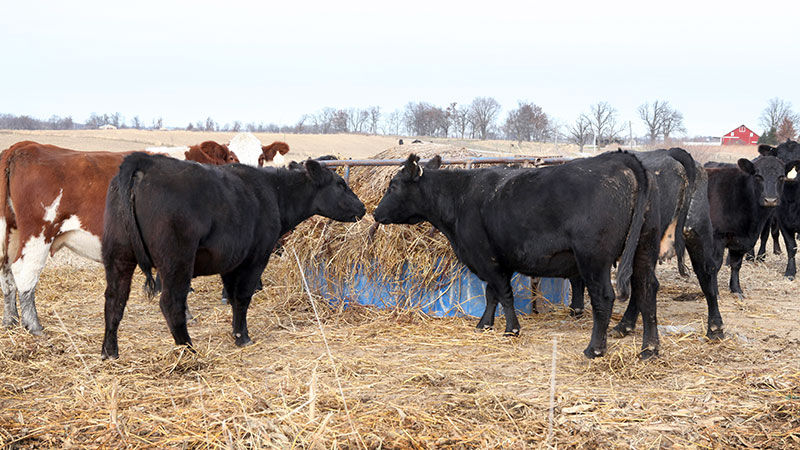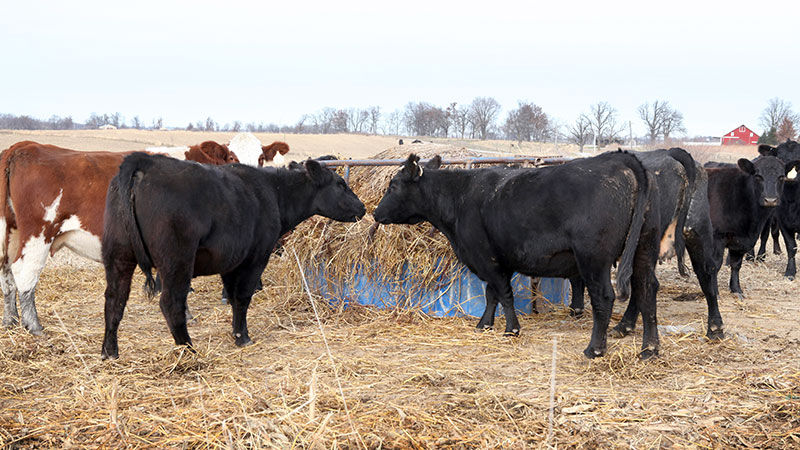Hands-On Self-Sufficient Living in Florida, by Bonnie R.


Introduction
I
have
lived
in
Southwest
Florida
for
my
entire
life.
My
dad
is
a
Florida-raised,
University
of
Florida
graduate.
My
mother
spent
half
her
childhood
in
Indiana
and
the
other
half
in
Naples,
Florida.
Before
my
siblings
and
I
were
born,
my
parents
started
a
semi-successful
beekeeping
business
that
has
been
going
strong
for
thirty
years.
Now,
I
say
“semi-successful”
because
when
you’re
running
a
beekeeping
business
you
rely
mostly
on
nature;
and
nature
is
something
that
is
depleting
with
every
passing
year.
However,
they
built
this
business
well
enough
that
they
were
able
to
homeschool
and
raise
seven
children
off
the
profits.
Their
three
oldest
sons
have
even
come
to
profit
from
their
own
beekeeping
businesses.
I
will
go
a
little
further
into
the
beekeeping
aspect
of
our
life
later
into
the
article,
but
for
now
let’s
start
with
farming.
The
four
younger
children
(including
myself)
stick
with
cows,
poultry,
and
gardening.
We
primarily
raise
is
cattle.
This
includes
beef
cows,
dairy
cows,
and
beef/dairy
crosses.
We
have
had
many
of
our
animals
fall
ill,
but
none
like
the
cows.
Sometimes
after
recently
giving
birth,
the
dairy
cows
got
milk
fever.
Milk
fever
is
caused
by
a
blood
calcium
deficiency
in
which
the
cow
will
be
unable
to
stand
up.
She
may
also
have
diarrhea,
become
dehydrated,
and
can
even
die.
This
is
something
that
happened
to
us
once).
For
this,
we
gave
electrolytes
and
calcium
supplements.
We
even
found
that
Tums
heartburn
tablets
would
work,
in
an
emergency
situation.
To
get
the
cows
off
the
ground,
we’d
push
a
heavy
linen
sheet
or
a
tarp
underneath
them
and
then
get
as
many
people
as
possible
to
lift
them
up.
More
often
than
not,
the
sheet
or
tarp
would
rip.
Scours
was
when
one
calf
would
get
severe
diarrhea;
and
then
the
rest
of
the
herd
would
get
it.
In
fact,
just
earlier
this
year
a
young
calf
got
it.
We
ended
up
giving
it
electrolytes
and
barley
water.
This
is
fairly
easy
to
make
and
works
wonders.
Of
course,
the
only
way
to
get
it
into
the
calf
was
feeding
it
with
a
large,
needleless
syringe.
Since
local
farmers
would
give
us
truckloads
of
vegetables,
bloat
was
a
problem
as
well.
When
a
cow
got
severely
bloated
we’d
have
to
“stick
them”
to
release
the
gas.
To
stick
a
cow
you
need
a
two-inch-long,
14
gauge
needle.
You
want
to
stick
it
in
the
left
hand
side
of
the
cow,
one
hand
width
(long
ways)
down
from
the
spine
and
one
hand
width
away
from
the
last
rib.
In
less
dire
situations
we’d
just
walk
the
cow
around
a
lot
until
the
bloat
was
relieved.
Some
symptoms
of
bloat
were
restlessness
in
the
cow,
frequent
but
small
bowel
movements,
and
a
severely
swollen
stomach.
We
even
had
some
of
our
more
distended
cows
vomit
clear,
watery-looking
substances.
Getting
the
free
vegetable
waste
from
the
farmers
helped
out
financially,
but
the
cows
would
get
diarrhea
if
they
ate
too
much
of
one
kind
of
vegetable.
We
even
lost
two
cows
because
they
choked
on
unripened
tomatoes.
Killer
Bees
One
day
we
had
our
dairy
cows
and
a
few
donkeys
locked
in
a
small
pasture.
What
we
didn’t
know
was
there
was
an
Africanized
beehive
in
that
same
pasture.
The
bees
started
to
attack
the
animals.
My
brothers
and
father
had
to
get
the
livestock
out
of
that
pasture
immediately.
In
the
process
they
got
stung
up
pretty
badly.
The
herd
suffered
from
this
attack
as
well.
We
ended
up
losing
one
donkey.
The
dairy
cattle
were
mostly
fine
except
their
milk
production
dropped
drastically
for
a
while.
We
also
had
a
young
steer
die
unexpectedly,
but
found
out
later
it
was
liver
flukes.
A
difficult
birth
is
another
thing
that
we’ve
lost
a
dairy
cow
to.
This
is
something
we
have
come
to
watch
for.
We
have
also
learned
to
check
our
pastures
for
poisonous
plants.
Rosary
Pea
and
Lantana
are
two
big
ones
here
in
Florida.
Usually
our
cows
would
leave
these
alone;
but
they’ll
eat
it
if
they’re
hungry
enough
and
that
can
lead
to
problems.
Throughout
the
years
we
haven’t
just
raised
cattle.
We
had
mule-footed
pigs
for
a
while,
but
with
the
recent
spike
in
prices,
we
sold
them.
There
was
one
pig
that
died
of
a
heart
attack.
We
also
ended
up
having
to
butcher
a
breeding
boar
because
it
got
so
big
that
its
hoof
started
to
split.
Some
Poultry
Problems
The
poultry
brought
some
diseases
like
coryza;
but
there
were
mainly
only
mild
inconveniences.
For
instance,
my
mother
would
buy
meat
birds
to
raise
every
year.
To
my
readers,
may
I
suggest
that
if
you
live
in
Southwest
Florida,
do
not
purchase
Cornish
hens
to
raise
in
the
summer.
It’s
too
hot
and
they
can’t
take
the
heat.
They
will
literally
die
from
it.
Cornish
chickens
also
have
a
habit
of
sitting
on
the
edge
of
their
food
and
water
bowls,
which
can
cause
the
bowl
to
flip
on
top
of
themselves
and
they’ll
die
from
that
as
well.
So
if
you,
for
some
reason,
decide
you
want
to
raise
meat
birds,
then
be
sure
they
have
constant
water
and
shade
available,
and
weight
down
their
bowls.
Sure,
they’re
butchering
size
in
as
little
as
six
weeks
if
you
feed
them
enough,
but
that
six
weeks
is
not
fun.
Home
Remedies
You
also
learn
a
lot
of
remedies
growing
up
on
a
farm.
For
instance
vinegar
reduces
bruising,
swelling,
soothes
a
sunburn,
and
helps
with
insect
stings
and
bite.
Ground
cayenne
pepper
applied
to
a
wound
will
slow
bleeding.
Honey
reduces
inflammation,
heals
chapped
lips,
and
eases
rashes.
Some
doctors
even
suggest
putting
honey
on
infected
wounds.
A
raw
sliced
potato
will
draw
out
infection
and
soothe
poison
ivy.
Crushed
garlic
taped
on
a
plantar
wart
will
kill
it;
however,
the
trick
is
that
it
has
to
burn
and
blister
the
wart
and
the
skin
around
it.
Let’s
come
back
to
the
reason
we
have
donkeys:
they
will
attack
predators.
This
is
why
we
try
to
keep
donkeys
with
our
cattle
at
all
times.
We
still
have
predators,
but
you
can
almost
always
guarantee
that
if
there
is
a
threat,
a
donkey
will
at
least
attempt
to
overcome
it.
We’ve
had
donkeys
kill
foxes;
they’ve
even
gone
after
an
alligator
that
was
in
one
of
the
pasture
ponds.
Beekeeping
As
for
the
bees,
I
don’t
know
nearly
as
much
as
my
father
and
brothers
on
the
subject,
but
I
do
know
a
little.
There
are
many
different
forms
of
beekeeping.
Some
beekeepers
specialize
in
pollination,
which
is
where
farmers
will
pay
beekeepers
to
house
their
beehives
on
their
crop-growing
land
to
allow
the
bees
to
collect
pollen
and
nectar
from
the
vegetable
or
fruit
blooms;
this
is
to
ensure
a
successful
crop.
Another
variation
of
beekeeping
is
grafting
queens.
Grafting
is
when
a
beekeeper
moves
larva
from
one
hive
to
another
so
that
the
worker
bees
can
raise
a
new
queen.
The
beekeeper
will
harvest
these
queen
cells
and
then
sell
them
to
other
beekeepers
who
need
queens
in
order
to
split
their
hives.
“Splitting”
a
hive
is
when
you
take
half
of
the
bees
out
of
the
original
hive
and
put
them
into
an
empty
one.
Since
there
is
only
one
queen
per
hive,
the
new
hive
won’t
have
a
queen
but
will
need
one
to
reproduce
worker
bees
(the
ones
that
make
the
honey,
regulate
temperature,
feed
the
queen,
protect
the
hive,
etc).
That’s
where
those
grafted
queen
cells
come
in.
The
kind
of
beekeeping
my
father
did
was
primarily
for
honey
production.
In
order
for
his
bees
to
produce
honey,
they
had
to
have
an
abundance
of
nectar-producing
flowers
and
blooms.
The
main
floral
sources
for
our
honey
were:
Orange
trees,
Palmettos,
wildflowers,
and
the
Mangrove
trees
in
the
Everglades.
A
few
times
we
did
harvest
Florida
Sunflower
honey.
Locally,
different
types
of
honey
are
harvested
during
different
times
of
the
year.
The
Orange
Blossom
and
Palmetto
honey
was
harvested
in
the
spring;
wildflower
honey
was
in
fall
and
winter;
and
the
Mangrove
honey
crop
was
in
the
summer.
If
you
are
in
Florida
and
want
to
plant
blooming
foliage
that
the
bees
will
benefit
from,
then
here
are
a
few:
•
Spanish
Needle
•
Frog
Fruit
•
Sunflowers
•
Lavender
•
And
any
type
of
blooming
vegetable.
I
don’t
know
many
tips
and
tricks
about
beekeeping,
but
I
did
grow
up
around
beekeepers
and
grafted
queens
for
my
brother
one
summer.
I
found
it
to
be
a
valuable
learning
experience.
One
trick
I
remember
is
if
you
get
stung
by
a
bee,
don’t
pinch
the
stinger
to
pull
it
out;
this
will
release
more
venom
into
your
body.
Instead
scrape
the
stinger
off
with
a
sharp
edge,
like
your
fingernail,
knife,
or
credit
card.
Another
thing
is
when
a
bee
is
buzzing
around
you,
it
most-likely
won’t
sting
you;
it’s
just
curious.
It
might,
but
probably
not.
They
mainly
try
to
sting
if
they
feel
threatened,
or
if
there
are
a
lot
of
them
(a
swarm).
Just
remember,
do
not
swat
at
bees.
That
tends
to
provoke
them
to
stinging.
Just
like
anything
there
are
predators
for
bees,
too.
Bears
will
destroy
hives.
However,
unlike
Pooh
Bear,
bears
actually
are
trying
to
eat
the
bee
brood
(larva)
rather
than
the
honey.
Surprisingly,
dragonflies
will
eat
bees
too.
This
happens
mainly
when
the
bees
are
flying.
A
Gardening
Tip
Finally,
I
have
just
one
thing
that
one
of
my
brothers
suggested
I
work
into
this
article;
a
very
useful
gardening
tip.
He
says:
“It
is
very
rare
that
your
soil
is
low
on
calcium.
But
if
it
is,
then
that
means
the
soil
is
actually
lacking
water.”
So,
as
you
can
tell,
there
have
been
many
late
nights
dealing
with
unexpected
disasters,
sick
animals,
and
so
much
more
than
I
could
ever
fit
into
one
article.
My
siblings
and
I
have
learned
more
than
we
ever
could
at
any
school
about
raising
animals,
taking
care
of
them
when
they’re
sick,
and
animal
psychology.
The
latter
is
something
so
complex
and
confusing
that
you
could
never
learn
by
just
reading
about
it.
This
knowledge
and
firsthand
experience
is
something
we
are
thankful
for.
Even
though
we
could’ve
gone
to
public
school
and
possibly
gotten
a
scholarship,
gone
to
college,
and
then
decide
not
to
use
the
degree
we
spent
four
years
of
our
life
on,
and
instead
became
a
full-time
waitress/waiter
with
a
lot
of
regret
and
even
more
student
debt
under
our
belt.
At
least
we
were
taught
something
that
was
worth
learning,
things
we
can
use
for
the
rest
of
our
lives.
